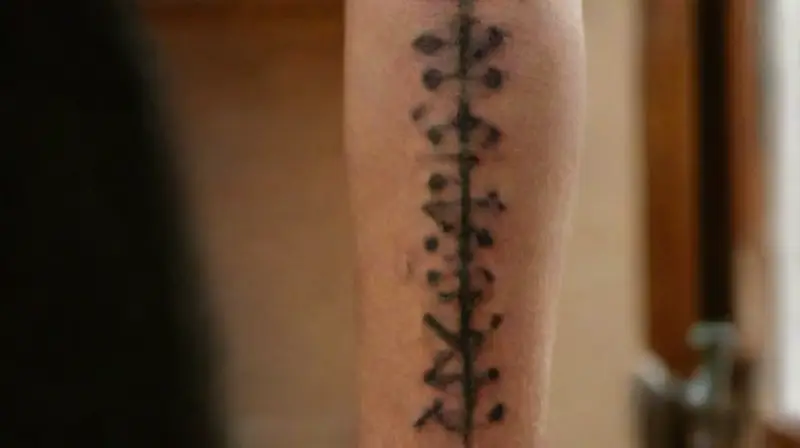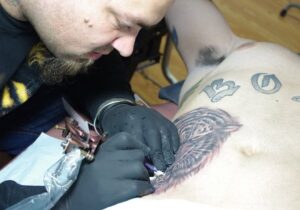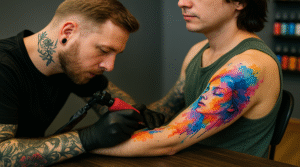Blackwork tattooing has gained immense popularity, captivating many with its bold and striking visuals. This art form is characterized by the extensive use of black ink to create intricate designs and patterns. Artists specializing in blackwork push boundaries, transforming their visions into powerful body art that makes a statement.
Many enthusiasts are drawn to the dramatic contrast and timeless appeal of blackwork tattoos. Skilled artists in this niche combine creativity and precision to produce custom pieces that stand out. Their work often requires a high level of expertise and a deep understanding of the art form, making blackwork tattooing a unique and respected discipline within the industry.
The History of Blackwork Tattooing
The origins of blackwork tattooing trace back centuries across various cultures. Ancient tribes used black ink to symbolize spiritual beliefs, status, or protection. Over time, these traditions evolved and influenced modern tattooing practices.
In recent decades, blackwork has re-emerged as a contemporary art form. The resurgence is partly due to the popularity of bold, graphic styles seen in popular culture. Today, artists are continually exploring new techniques to innovate within this timeless style.
Blackwork’s history underscores its cultural significance and artistic versatility. It pays homage to its roots while evolving into a modern expression of identity. Tattoo artists now blend traditional motifs with modern aesthetics to keep the art form fresh and relevant.
Techniques and Styles in Blackwork
Blackwork artists employ various techniques to achieve different effects. One common method is solid black shading, creating areas of complete darkness within a tattoo. This technique requires patience and meticulous planning to ensure sharp and clean lines.
Another popular style within blackwork is geometric and pattern-based design. These designs often feature repetitive motifs, symmetry, and intricate detail. Artists often combine these elements to craft visually captivating compositions that emphasize structure and balance.
Textural effects, such as stippling or feathering, are also utilized to add depth and dimension to blackwork tattoos. These methods provide a sense of shading without relying on color gradients, highlighting the versatility of black ink in creating depth and complexity.
Prominent Blackwork Tattoo Artists

Several artists have gained recognition for their exceptional blackwork portfolios. These professionals have crafted iconic pieces that inspire aspiring tattooists worldwide. Their mastery of bold lines and shading has set new standards within the industry.
For instance, some renowned blackwork tattooists are known for their large-scale mandala designs or dark, abstract compositions. Their unique styles often intertwine traditional motifs with contemporary art, making their work instantly recognizable.
Many of these artists leverage social media to showcase their latest projects and connect with a global audience. Their influence extends beyond the studio, inspiring a new generation of tattoo enthusiasts and practitioners eager to learn the craft.
Designing Blackwork Tattoos
Creating a blackwork design begins with deep conceptualization and careful planning. Tattoo artists work closely with clients to understand their vision, ensuring the design reflects their unique story or personality. This collaboration is crucial for crafting a meaningful piece.
Once the idea is solidified, artists sketch custom designs, paying attention to composition and line work. The stark contrast of black ink demands precision; any mistake can be difficult to correct. As a result, the planning phase is integral to the final outcome.
The process also involves significant consideration of placement and size, which influence how the design will age over time. An experienced blackwork artist balances aesthetics with technical execution, ensuring longevity and visual impact.
The Challenges of Blackwork Tattooing

Blackwork artistry presents distinctive challenges that require advanced skill and experience. The density of black ink can lead to issues such as ink bleed or uneven shading if not executed properly. Artists must be meticulous to avoid mistakes that could compromise the design.
Furthermore, Blackwork tattoos often involve large areas of coverage, which can be time-consuming and physically demanding for both the artist and the client. It requires patience, stamina, and careful working conditions to achieve optimal results.
Another challenge is ensuring the tattoo remains sharp and clear over years. Proper aftercare and high-quality ink are essential to prevent fading or blurring. These factors underscore the importance of choosing a seasoned blackwork tattoo artist who understands the nuances of the technique.
The Future of Blackwork Tattoos
Blackwork continues to evolve with innovations in technique and design concepts. New tools and inks allow artists to push creative boundaries further than ever before. As a result, this style remains at the cutting edge of tattoo artistry.
Emerging artists are blending blackwork with other styles, such as watercolor or realism, to create hybrid tattoos that expand traditional definitions. This experimentation keeps blackwork fresh and appealing to diverse audiences.
Additionally, the demand for blackwork tattoos is expected to grow as more people appreciate the bold visual impact and artistic boldness. The style’s flexibility and expressive potential promise a vibrant future for both artists and enthusiasts alike.
Conclusion
Blackwork tattooing has cemented itself as a powerful and versatile form of body art. Its history, technical mastery, and ongoing innovation demonstrate the incredible skill and creativity of the artists who dedicate themselves to this style. For clients seeking tattoos that make a statement, blackwork remains an unmatched choice.
As the art form continues to evolve, blackwork artists will undoubtedly discover new ways to push the boundaries, transforming bodies into living canvases. Their work not only celebrates tradition but also drives the future of contemporary tattooing toward exciting horizons.








